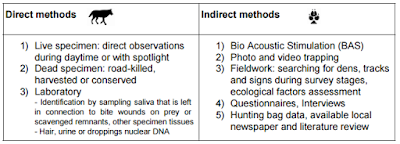by Ovidiu C. Banea
It seems, (news HERE) that Environmental Board Authorities from Burgenland Austria are preparing a law to become in discussion and possible applied during the coming January 2017 on the hot topic of declaring or not, jackal species as IAS (Invasive Alien Species). Just by supposition that jackal species could appear in the natural areal of the great bustard Otis tarda, Game Mangement Authority is close to name jackals as IAS and purpose specific harvesting and hunting management, while is known that in Austria only few jackal sightings were reported in the recent past, and these at the Hungarian border.
GOJAGE remembers Austrian Game Management Authorities that a condition to be fill before every kind of management measure in case of the golden jackal species is to demonstrate the exponential growth of the actual living population, this after colonization period, then to assure the allochtonous character, which in case of jackal species it was already demonstrated to be errouneously considered, as the species is considered a natural colonizer, and yes ultimately to be demonstrated a direct negative impact to protected or endangered biota. In this case, if a possible negative impact relation could be demonstrated in relation to Otis tarda, the species requiers an International debate and scientific studies to be eventually considered in a determined area with "Invasiveness" not even IAS, being perfect possible to be declared full protected in the proximal land. More data and "Letter of Complaint" in the Baltic case (here). This letter and arguments determined Lithuanian authorities and from other Baltic states to avoid Invasive Alien Species nomenclature in case of the European golden jackal.
The great bustard Otis tarda (in green resident populations)
Otis tarda Factsheet (European Union)
THREATS
Although the great bustard has a wide range, its population in Europe is now highly fragmented, surviving only in relatively isolated pockets in a few EU Member States (half the EU population is found in Spain). The threats are relatively well known :
• Agricultural intensification: the most critical threat comes from continued habitat loss resulting from ploughing up grasslands, intensifying cereal production to mono-cropping or permanent crops, and irrigating dry culture land;
• Infrastructure development: other land use changes such as afforestation, construction of roads, powerlines, wind farms, housing etc. in or near the species range also causes habitat loss and significant disturbance leading to a reduced breeding success;
• Application of certain agricultural practices: the use of herbicides, pesticides and fertilizers in core bird habitat, ploughing of fallow in spring, early harvesting and burning of stubble in summer can destroy nests, poison adults and reduce food sources;
• Change of crops: a reduction in alfalfa or other leguminous winter crops affects the birds’ chances of survival due to reduced food sources and cover in winter;
• Overgrazing: inappropriate grazing management may damage breeding grounds;
• Collision with powerlines: bustards are big birds, their poor manoeuvrability in flight renders them unable to evade poorly marked powerlines. Collision with overhead cables is a significant cause of death in some countries. Small populations can be totally destroyed by a single powerline;
• Human disturbance: disturbance causes stress, desertion of clutches, and in the case of young birds, a reduction in time spent feeding. Disturbance at the display sites disrupts social behaviour and usually prevents reproduction;
• Predation: eggs and chicks are predated by foxes, corvids and dogs
The question of how jackals could affect negatively the great bustard remains to be addressed to the Austrian Federal Ministry of Agriculture, Forestry, Environment and Water Management (BMLFUW) and ask a detailed integrate monitoring to Otis tarda species, red foxes, and also for jackals and other known threats identification in the specified natural areas to assess the species applied ecology and natural areas invasibility before every management measure which may produce irreversible effects to golden jackal species.
The Golden jackal is a Community Interest species ("Habitats Directive" 92/43/EEC) listed in Annex Va together with pine marten (Martes martes), European polecat (Mustela putorius) and chamois (Rupicapra rupicapra) between other mammals. Monitoring of conservation status is an obligation arising from Article 11 of the Habitats Directive for all habitats (as listed in Annex I) and species of Community interest (as listed in Annex II, IV and V) . Consequently this provision is not restricted to Natura 2000 sites and data need to be collected both in and outside the Natura 2000 network to achieve a full appreciation of conservation status. The main results of this monitoring have to be reported to the Commission every six years according to Article 17 of the directive.
After all, the Golden jackal invasiveness, the arrival (introduced by humans?), spreading and establishing of a new survival population, should be carefully assessed and in regions with high invasibility degree to be differentiate of the erroneously discussed IAS (invasive alien species) nomenclature, which in case of the Golden jackal was largely assessed by several European research groups and scientific community (European Commission ALERT: Jackal should not be considered as IAS in Europe).
13th of December 2016
Reykjavik, Iceland






































